Curtains in the living room: varieties and interesting examples

Whatever the style of the interior, its embodiment, accessories and furniture, without curtains the room will seem uncomfortable and deprived of something. However, not every model is capable of becoming a worthy completion of the stylistic solution of the interior.



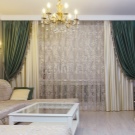
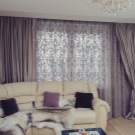
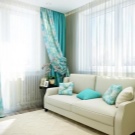
Peculiarities
The possibilities of curtains for decorating windows and doorways of the living room are truly great. The curtains give the interior of the living room a homely atmosphere, which is the defining criterion for the comfort of all households. The models offered by the brands to the attention of buyers differ in design, design method, material of manufacture, and functionality of the fittings.

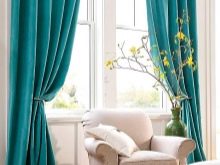
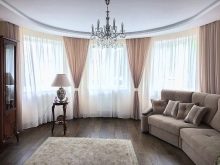
Each product has its own characteristic features that distinguish it from other curtains in different ways... For example, some modifications are not designed to close and open windows. Others do not carry any functional load at all - their purpose is only to decorate the space, to increase the level of its aesthetic appeal.
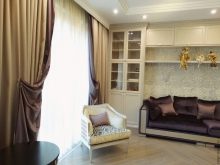

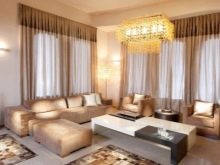
At the same time, the stationarity of the models often plays into the hands of the practicality of the curtains. Due to the fact that they are drawn up for a long time, such curtains become covered with dust faster. Depending on the type and arrangement of furniture, products for the living room can have different lengths and widths, whereby a different level of draping of the panels according to the conceived design is achieved.
Based on the type of construction and layout features of a particular room, they can have different purposes:
- for one window;
- on a window with a balcony door;
- for doorways of different types;
- on bay windows.
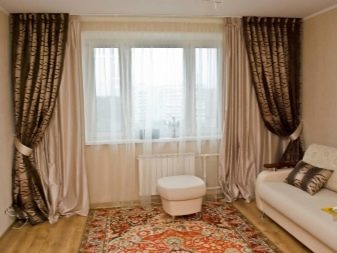
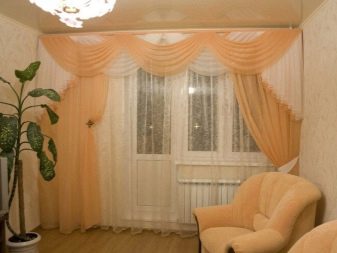
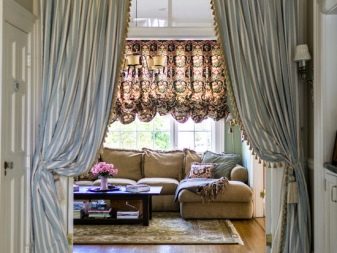

The curtains can be solid and separate for each window, together forming a certain curtain composition. Based on the design features, they can be classic symmetrical or asymmetrical. A distinctive feature of the models is the ability to combine.
Most of the varieties are perfectly combined with each other, which allows the interior to look fresh and unbroken.

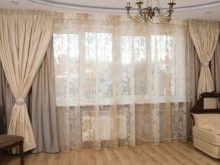
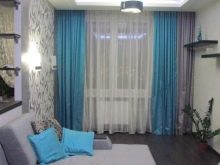
Mounting options
The fastening of certain models depends on their type. During the production process, the curtains can be supplied with eyelets or loops, special ribbons. Other models do not need such fasteners, since, according to the design, it was conceived to throw them over the cornice with the formation of the so-called swags and perekidov.
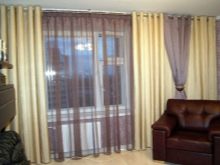
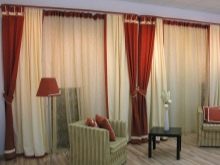

However, usually the type of fastening depends on the type of eaves. Models with rings are attached to the tubular cornice, as are the curtains on the drawstring. Those curtains for windows that are attached to the ceiling are equipped with hooks or curtain tape. Curtains are usually attached to the ceiling when there is no possibility of fixing to the walls or there is no place for attaching the curtain to the wall. Ceiling options are convenient in that they allow you to visually stretch the length of the walls.

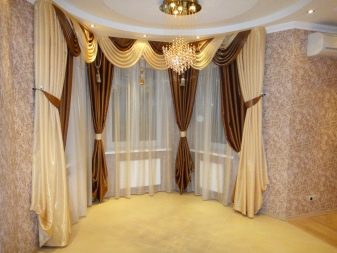
Today, some of the most popular types of curtain rods are tire options made of plastic. Tubular products can be decorated with decorative tips, baguette accessories outwardly resemble curly or rectangular strips that hide the hooks. Profile options are convenient in that they are able to bend and take the desired shape.
Eaves have to be selected taking into account the type of windows. For a plastic frame, products of a modern type are needed, for a wooden one - for a traditional one.
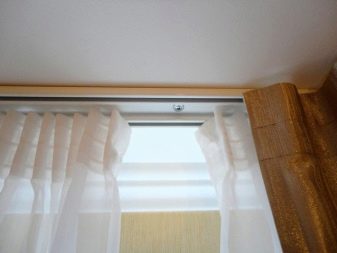
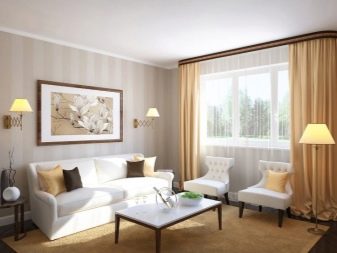
Views
There are many ways to classify curtains for decorating a living room. Conventionally, all varieties can be divided into several groups, each of which has its own categories. Most of the categories provide for the successful combination of curtains with many interior styles.
Products differ (as mentioned above) in the way of fastening. For example, they can provide for fixing on special Velcro, as well as on cornices, which are ceiling and wall, open and hidden.
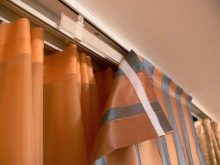
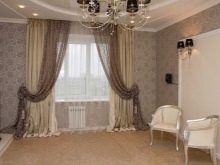
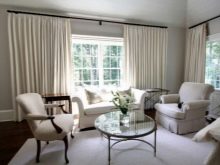
Consider the features of the popular species this season and their varieties.
Sliding
This group includes panels of different styles, which are united by the type of opening. The curtains move apart in different directions, while the degree of their opening can be varied. These items include curtains classic, crossed type, cafe, models with a lambrequin, photocurtains, Japanese and thread varieties.


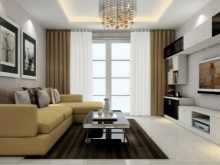
Classic straight
These curtains are most demanded by buyers today. Outwardly, they are simple, but in design they look very impressive. They can have different types of fastening: loops, eyelets, Velcro. They are characterized by textiles of varying density and transparency. Often complemented by lining.

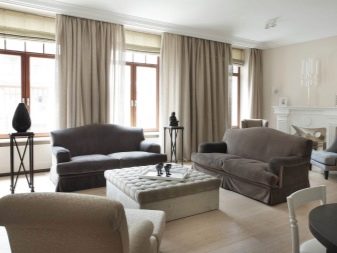
Crossed
These modifications are nothing more than straight-type curtains with a criss-cross arrangement of panels. They can consist not only of two fabric cuts, but also of a one-piece curtain, which, when decorated, is thrown over the cornice. They look unusual and are suitable for spacious rooms.
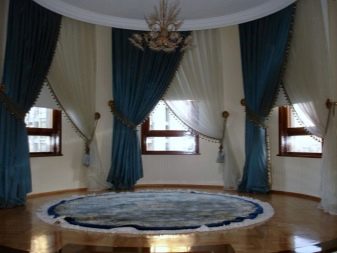

A cafe
This type of curtain is used in some vintage styles, curtains are characterized by a short length and a method of fastening using a transverse bar located in the middle of the window... Models are often complemented with ribbons, edging, fringe, but they are more suitable for a rustic style.
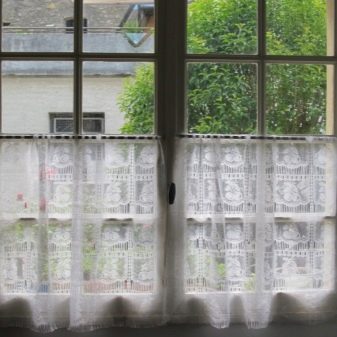
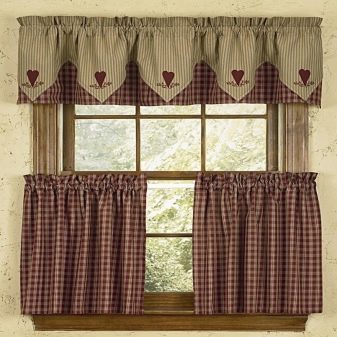
With lambrequin
Such products are nothing more than classic curtains, complemented by decor at the top. Lambrequin can be soft in the form of semicircular drapery elements or hard.
The second type is in great demand today, especially if it is decorated with some patterned ornament or perforation.

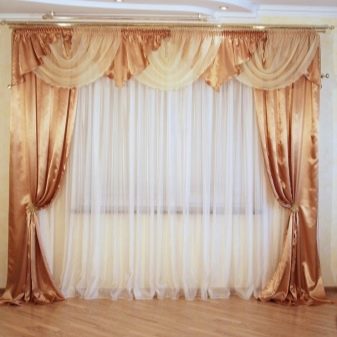
Japanese panels
Unlike previous models, Japanese panels have a rigid structure and are fixed on a special frame. These panels usually do not exceed one meter in width, do not have height adjustment, and move in width. Outwardly, they resemble screens used as partitions in the interior of the oriental style.

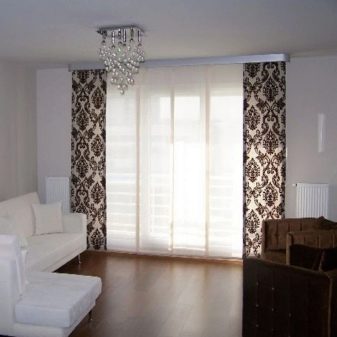
Filament
These varieties are accessories made of threads or the so-called muslin. Tangle resistance is attributed to the weight of the threads. Models look great when decorating living room doorways. They provide decoration, thanks to which they can look unusual.
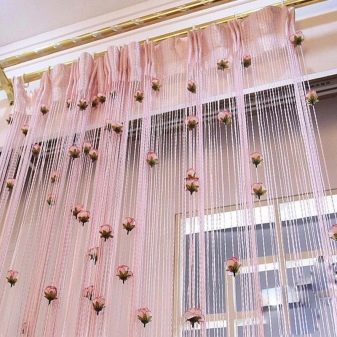
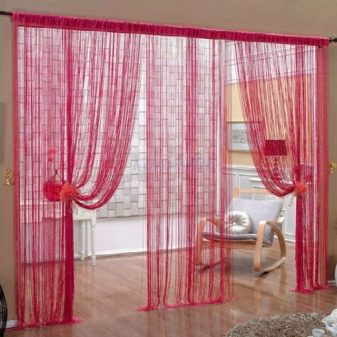
Photo curtains
Such models are the most ordinary classics (mainly with fastening on eyelets). These curtains are made of opaque textiles with digital photo printing applied to its front surface. The drawing can be ordered privately, picking it up for a specific direction of stylistics.
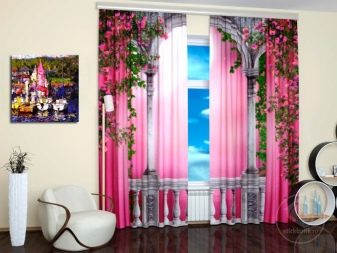
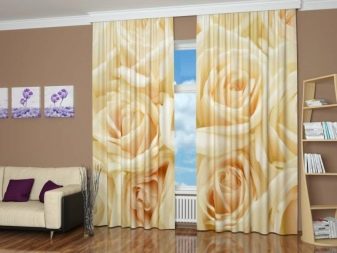
Lifting
The second group of curtains for decorating the living room is combined by the opening method, in which the curtains are raised by means of the provided mechanisms. Usually, varieties of this type cannot vary in width - they have clearly fixed dimensions, which are usually identical to the parameters of the window opening. In some cases, the models may be wider.
In professional circles, this group is often called flat, which is associated with the opening along the plane of the window. This line includes Austrian, French, English, Roman, roller blinds and pleated blinds.
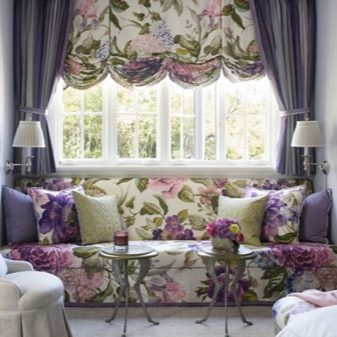
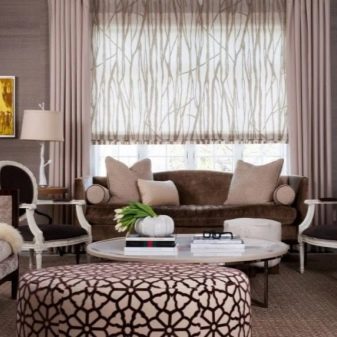
Austrian
The design of such models is unique. They are manufactured from a rectangular panel, the lower edge of which gathers into scallops or wavy folds. Usually, these curtains are not designed to be fully assembled.
It is important that the bottom is draped and the top remains straight.
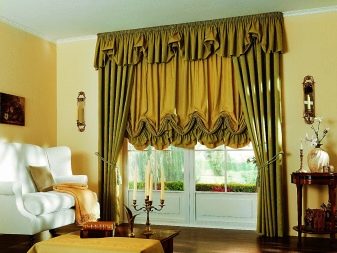

French
Like Austrian curtains, these panels are festooned with sewn ropes. The difference between the products is the appearance: the French models are completely assembled - from bottom to top. Depending on the preferences of the buyer, they can be long or short, differing in different degrees of gathering of the scallops.
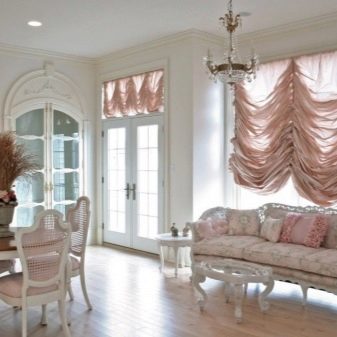

English
These models are somewhat similar to the Austrian ones, although their assembly system is somewhat different. They often have one central semicircle with an assembly and two sides. They are made from various textiles, which makes it possible to use the models in the arrangement of modern living rooms. Such options do not look as pompous as the Austrian counterparts.

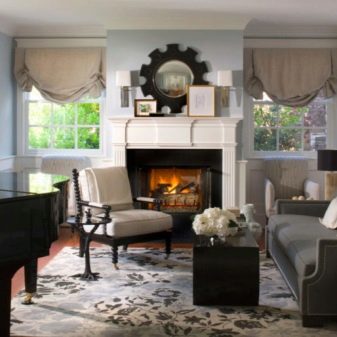
Roman
Such modifications have gained particular popularity today. When the windows are closed, they form a stack of folds of the same size. They do not have folds, they are distinguished by a special system of construction, by the presence of strips inserted into horizontal pockets of textiles. Attached to the cornice and equipped with a lifting mechanism that resembles a blind mechanism.
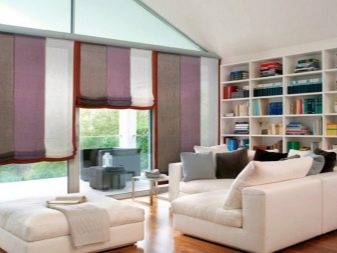
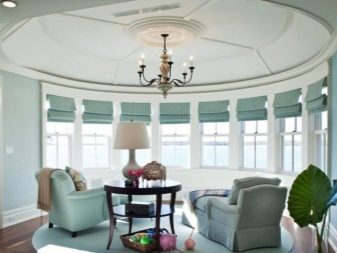
Roll
Blinds are canvases by the size of glass or window frames, they are equipped with a weighting agent and a special shaft on which textiles are wound when opened. Products can be cassette, which is convenient and practical, provide for a different type of opening (bottom-up or top-down). They look stylish, give the windows a special expressiveness.
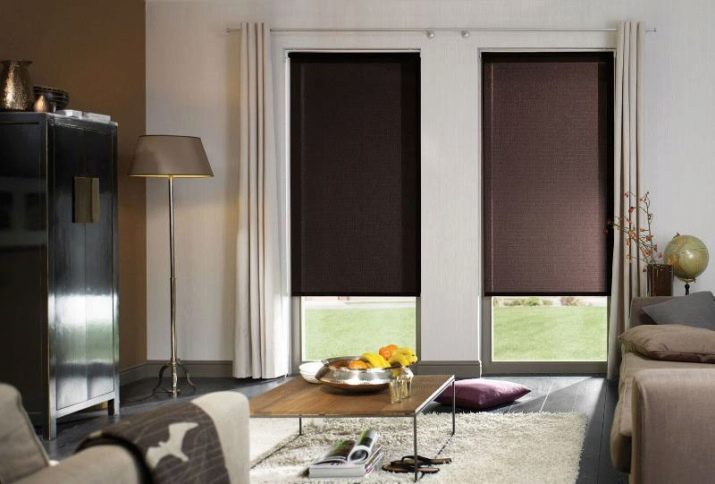
Pleated
These curtains complete the range of lift-type models. Outwardly, they are similar to blinds and Roman blinds, but their transformation consists in folding according to the accordion principle. Often these folds are much narrower than those produced by assembling Roman blinds. These options are expensive as they are made from textiles that have been impregnated for dimensional stability.
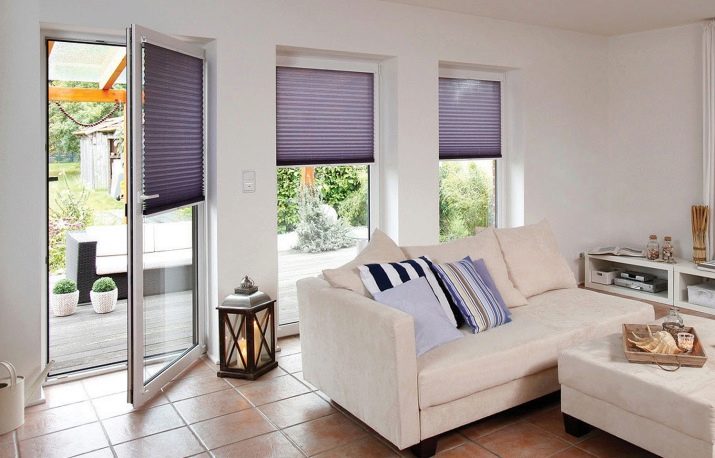
Stationary
Such modifications may differ in shape and type of design. They can be made on the basis of different curtains, but their key feature is the impossibility of opening and closing. In most cases, they have a reliable fixation on the cornice itself, which excludes any possibility of their shift or rise.
This line allows you to create special curtain compositions, without closing the window from prying people's views from the street. The category includes Italian, imperial and stained glass models, as well as styles "bishop's sleeve".
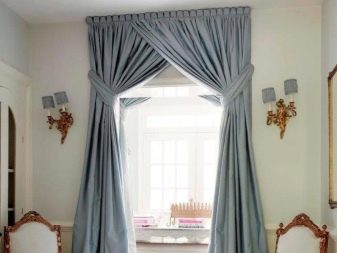
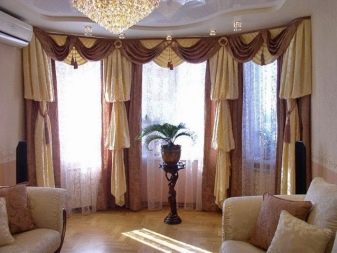
Italian
Outwardly, these models are very similar to the classics, however, in contrast to it, such canvases are fixed on the cornice itself in such a way that they do not provide for opening. To achieve this, you have to use several picks regardless of the length of the panels... In addition to them, for opening are often used decorative cords.
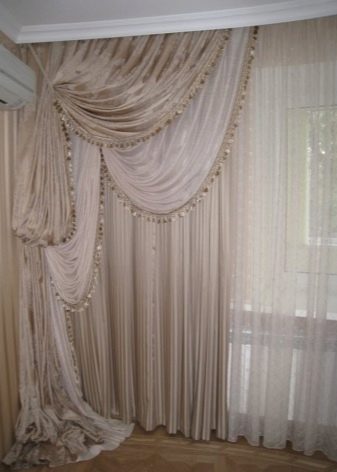
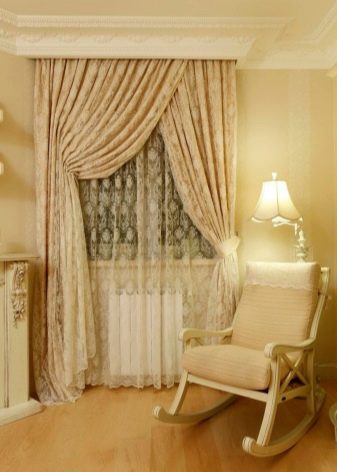
Imperial
Such modifications look very pretentious and elegant, which allows them to be used to decorate the living room in any of the classic directions of interior design. They are considered difficult to perform, represent curtain compositions with draperies of various shapes, and can have a wide variety of decor.
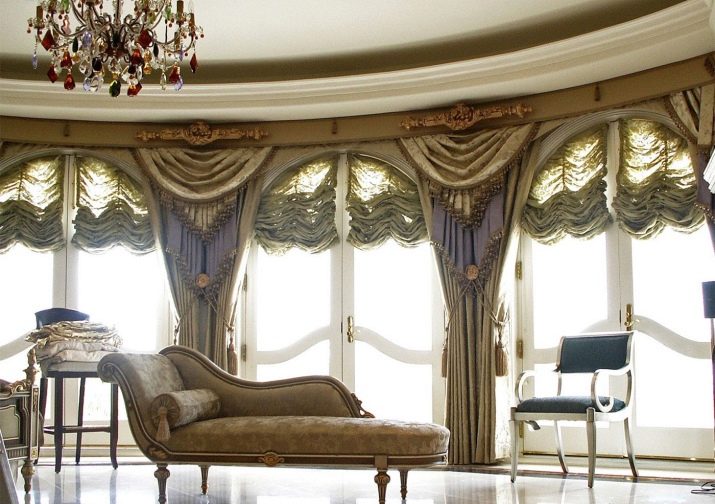
Stained glass
Curtains of this type outwardly resemble the interpretation of an hourglass, which is why they are often called that. They have cornices in the upper and lower parts, on which the fabric is put on. In the middle, they are collected by means of a selection (rope, bow).
These curtains are a great decoration for bay windows and doors with glass inserts.

"Bishop's Sleeve"
These products differ from the usual curtains. They are easily recognizable due to the characteristic feature that turns curtains into a kind of lanterns. This can be achieved in different ways, including the use of padding polyester or special paper to maintain the required shape, as well as grabs with brushes.
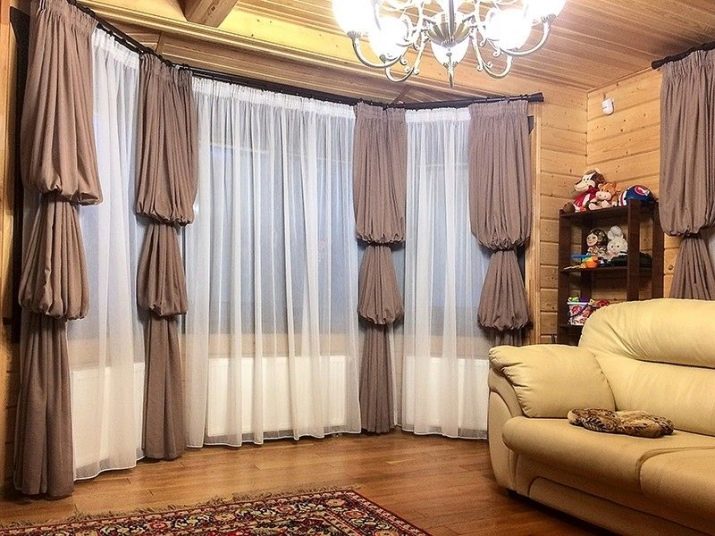
Manufacturing materials
In the production of curtain assortment, brands use different raw materials. Curtains are made from natural, synthetic and mixed threads. Natural ones are considered the best in terms of environmental friendliness. However, they are completely unstable to ultraviolet radiation, and they also wrinkle easily.
Synthetic and blended options are notable for the fact that they do not fade from the sun's rays. They wrinkle less, do not deform, do not shrink after washing. The density of the curtain fabric can be different: manufacturers produce textile models that are almost transparent, translucent, regular density and dense. The material differs in the type of weaving of threads, which is why it can stretch not only in one, but also in two directions, which is good for draped curtains.
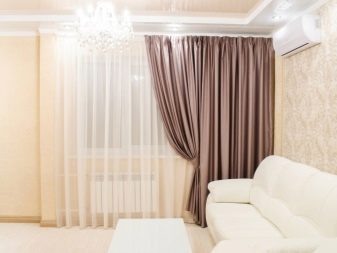
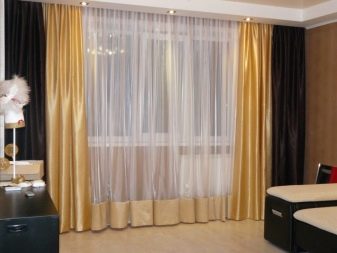
The most popular raw material options are header, mesh, chiffon, veil and organza. For classic interiors, satin curtains, drapes velvet models. Someone likes it better shadow modifications. Lightproof products are made from materials such as blackout and satinet... They perfectly hide the decoration of the room and its household from prying eyes.
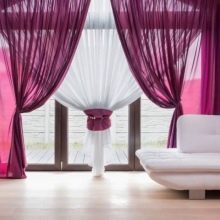
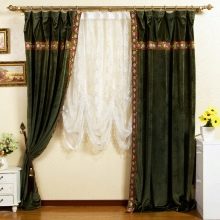

Curtain textiles can be woven, openwork, and sometimes supplemented with knitted motifs. Double-layer curtains are considered one of the fashionable solutions. Textiles can be flat or embossed.
Among other types, it is worth highlighting in a separate group. bamboo curtains. Today, their models can be very diverse: these are panels, and options for the classic rectangular type, and blinds, and even Roman curtains.
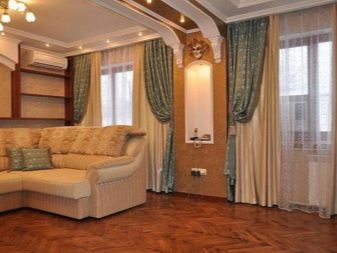

Color solutions: winning combinations
The colors of curtains for decorating living rooms can be very diverse. Today, manufacturers offer customers models in the most incredible shades, while models with an unusual shimmer are especially popular. For example, models made of translucent textiles with a mother-of-pearl tint, the effect of a May beetle, pearl or bluish sheen look fresh and extraordinary on the windows.

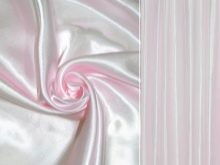
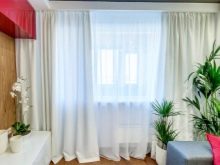
There are no restrictions on the choice of color today: the selected shades of the curtains are subject to the color choice of the interior design. However, there are still favorites in the new season, and besides, there are a lot of them. For example, this blue, light green, olive, pistachio tones, through which you can harmoniously accentuate the living room space. In addition to them, products in beige, milky, chocolate, gray-pink, sandy shades and wenge tones.
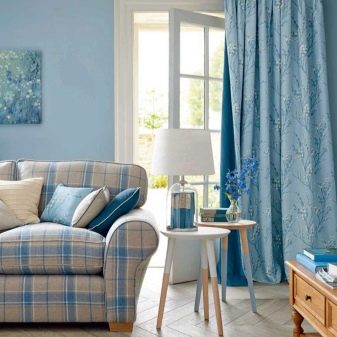

It is fashionable to mix neutral and color tones in the decoration of windows and doorways of the living room. For example, today it is customary to use curtains of two colors in the design with the transition from one to the other, or the so-called ombre models. Turquoise with white, white and pistachio (gray, blue) tones can be combined.
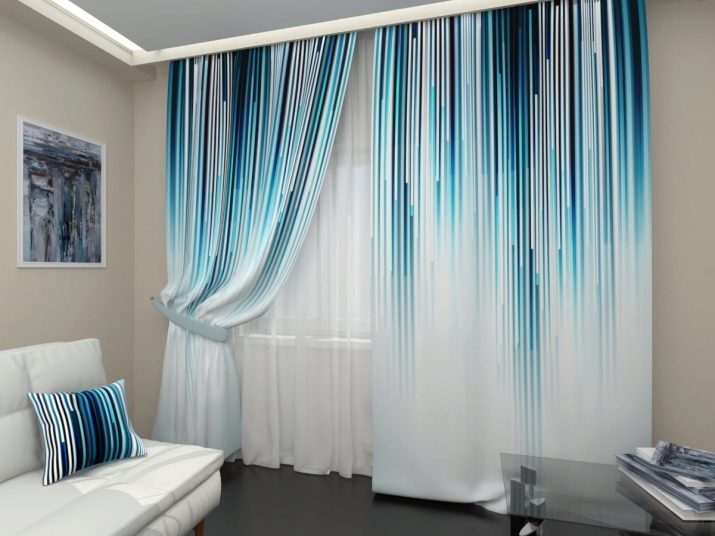
Contrast is in fashion, based on the combination of the background of the curtains and their pattern. For example, it can be a black and white mix, a duet of white and silver, beige and gold, sand and gold. Gray is still in demand: in design, its texture can be matte, silky, satin. It is fashionable to combine it with pink and purple, light yellow, white, turquoise. Among the bright shades, it is worth noting blue, burgundy, purple, orange and emerald colors.
As for red, today it is customary to use it in the color (print) of curtains.
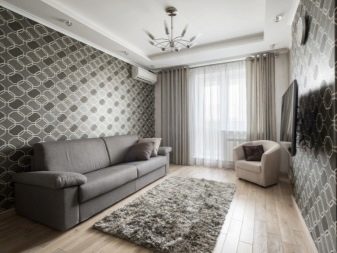
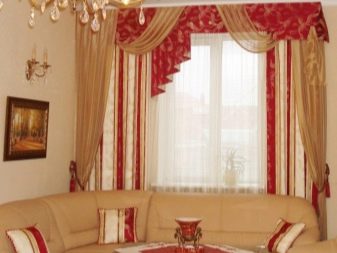
Combined options
Often, the goal is to create an interesting curtain design: designers resort to combining different types of curtains. Curtains become two-layer, or even multi-layer. You can combine not only products of different cuts, but also different textures. For example, it is fashionable to combine dense curtains with translucent tulle, Roman curtains and curtains on eyelets. The combination of styles with a lambrequin and a laconic veil looks good.
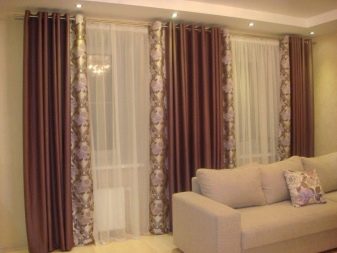
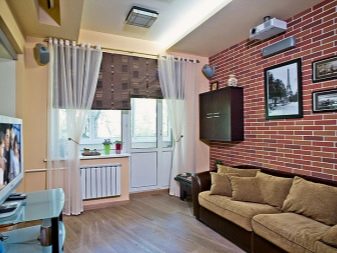
The issue of choosing textiles must be approached thoroughly so as not to turn a unique design into a vulgar composition. Curtains are needed to accentuate a specific style, but they should not draw all the attention to themselves. For example, in the design, textiles of different colors and textures can be used, but at the same time all of its types must be combined with each other.
If the design provides for a print, then one of the fabrics should be monochromatic, while the color can be related or contrasting.
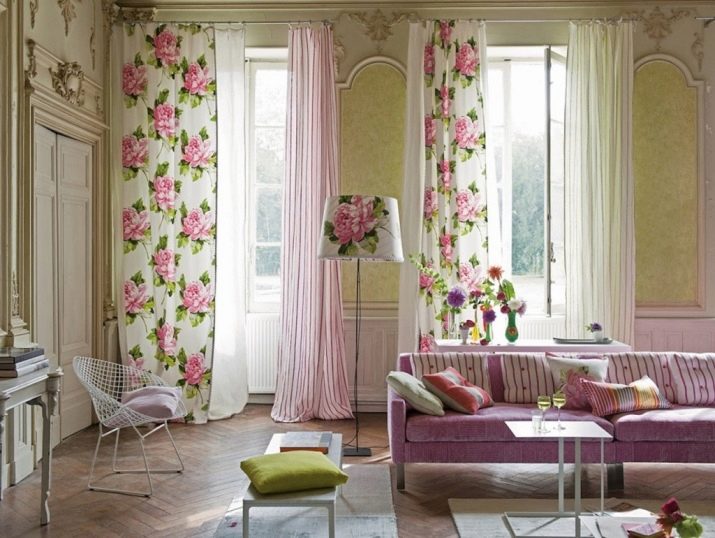
You can combine models by not only length, but also shape. For example, if laconic straight curtains are used on the sides in the curtain composition for the hall, the central part can be decorated with a panel with an oval, arched or curly cut. The combination of classic curtains and lambrequins, curtains and veils, London curtains and classics looks great in design.
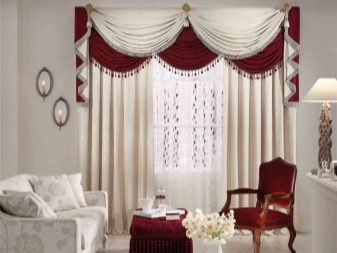
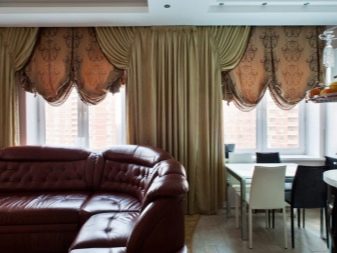
Style solutions
The range of curtains offered by trading companies is very diverse today. This is no coincidence, because curtains can be used as unobtrusive or bright accents in almost any interior style. They can decorate living room windows and doors in classic, vintage, modern interior art trends. Wherein each type of product will differ from others due to the characteristics of the resources of a particular style.
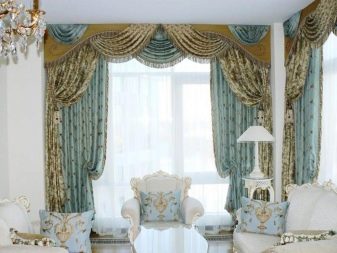
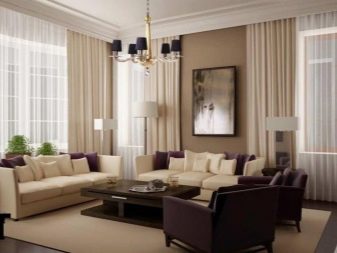
For example, the classic branches of design, which include classics, neoclassics, classicism, are distinguished by deliberate pomp and a desire to demonstrate palace solemnity. The curtains of these styles are usually elegant, decorated with lambrequins with swags and various perekidami. They differ in complexity in terms of cut or design on the eaves.
As a rule, in such curtain compositions, symmetry can be traced, the use of plain fabrics or with a print in the form of monograms, with a silky sheen.
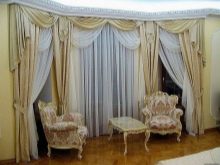
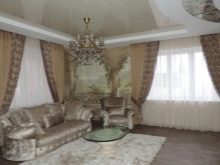
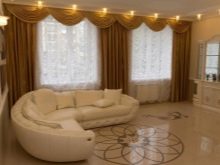
Analogues in the English style are smart and often pompous. These are heavy curtains with fringes, tassels, grabs of varying degrees of difficulty. Such curtains should emphasize the respectability of the interior, its high cost and high status. They can have gold fringes with tassels and original shaped hooks. These curtains are usually in soothing colors and are made of heavy textiles. London curtains come in different lengths.
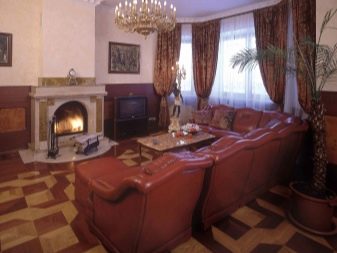

Models in styles provence and country have their own characteristics. Most of them are made with hinge or drawstring fastening. We can say that these are classic rectangular curtains of straight cut. A distinctive feature of these accessories is the use of floral prints and muted shades.
However, if for Provence it is customary to take cool colors as a basis, then country is distinguished by warmer shades.
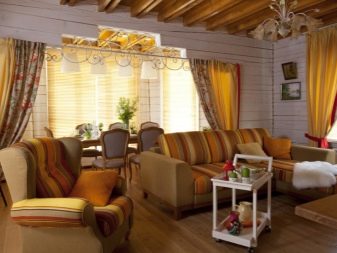
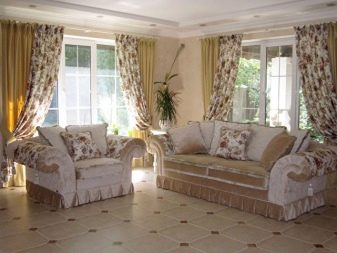
Typical colors of curtains of such styles are summer meadow flowers of small size, strip and cage. The decor is ruffles, piping, knitted inserts. Textiles are selected from natural or blended fibers. Usually curtains of such styles are matched to the textiles of the interior composition (sofa cushions, upholstery of upholstered furniture, chair covers) or some accessories (to match the lampshade of a table, floor lamp), wall cladding.
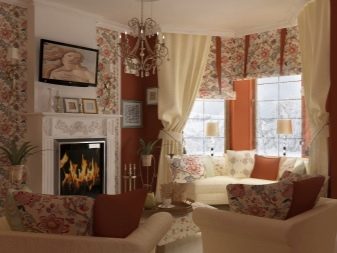
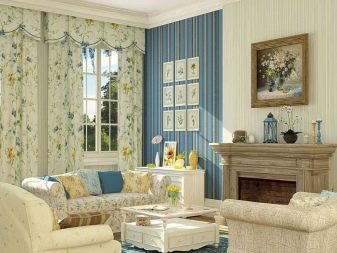
High-tech, modern and art deco differ in their vision of style. Outwardly, these curtains should look simple but elegant. If possible, in the interior, they should be combined with metal, which is typical for the arrangement of any of these styles. For example, it can be eyelet curtains made of high-tech textiles. In addition, it can be a model with a photo print depicting a photo of a city at night.

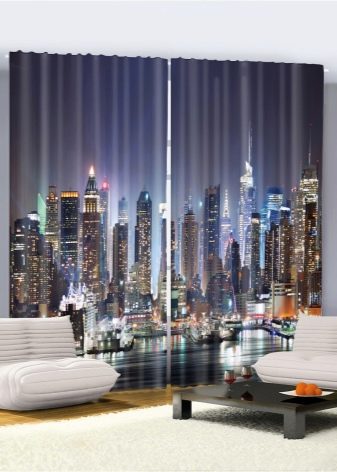
In modern styles of interior design, blinds look great, which can only cover the upper part of window openings... Manufacturability for Art Nouveau and Art Deco styles is a key criterion for the selection of any design element. It is the modern look and method of opening the curtains that make them stylish and appropriate accents of such stylistic solutions.
Blinds and Roman options do not overload the space. Outwardly, they are simple, but they give a high status to the living room with the right choice of material and color.
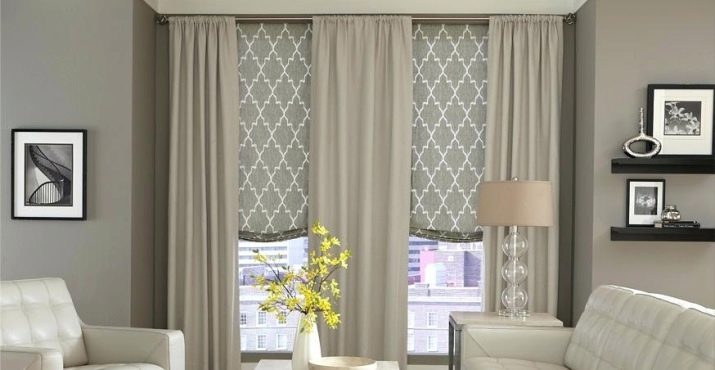
As for the most popular colors today, it all depends on the type of style. For example, in eco-style and some ethnic areas of the interior style, plant colors are welcome. These can be plant branches or leaves. As for colors, today the trends have changed somewhat: if until recently it was fashionable to select options with large flowers, today other combinations are in fashion. Dill corollas, dandelion umbrellas, sakura petals fluttering in the wind look good in the design of curtains.
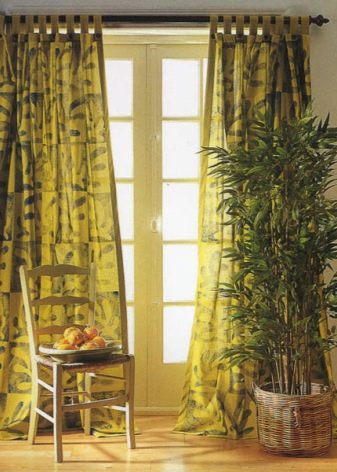
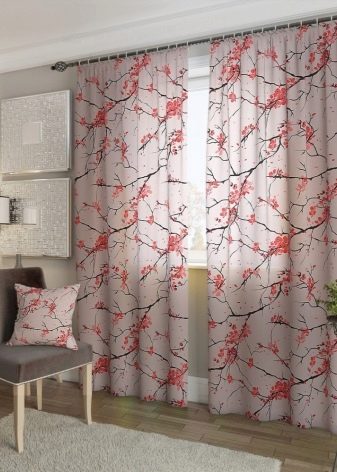
Striped curtains have not lost their relevance - Today, with the help of such a print, interior design professionals often play up the insufficient height of the walls. In addition, tropical colors are in vogue, which look great in spacious living rooms.
Styles can be varied, while stylists recommend looking at the options without unnecessary pomp.
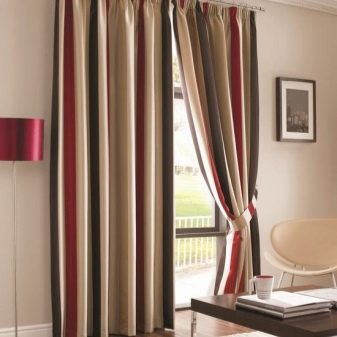
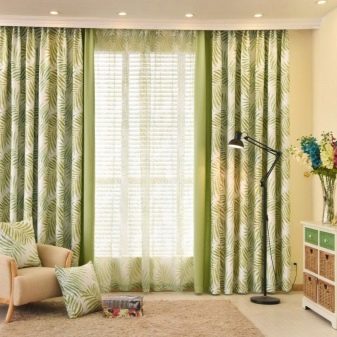
How long should it be?
Despite the fact that the curtains in the living room can be of different lengths, it is selected based on several factors. For example, the key ones are the practicality and style of a particular hall. Models can be short, medium, classic and long.
As for the options of the first type, depending on the models, the length may be different... For example, if these are roller blinds, then each of their panels can be exactly as many centimeters in length as they are in the height of the glass of a particular sash. If the fastening is carried out not inside the frame, but on top of it, the length should correspond to the level of the window sill.
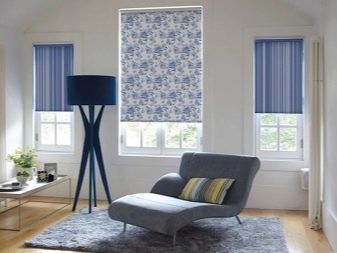
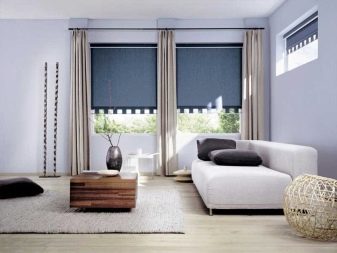
If these are stationary curtains, with which it is planned to decorate the upper part of the composition, then their length may be completely short (these are, for example, Austrian models that occupy one third of the frame). If you want the length to be short, you need to measure the length from the eaves to the windowsill. In finished form, the length of the curtains should not reach the windowsill by 1-1.5 cm. These models are used in combination with long curtains. They also decorate the bay windows of living rooms.
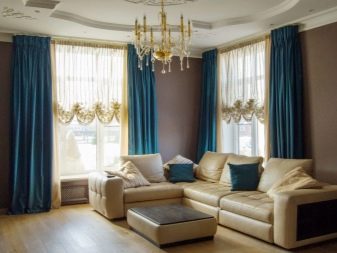
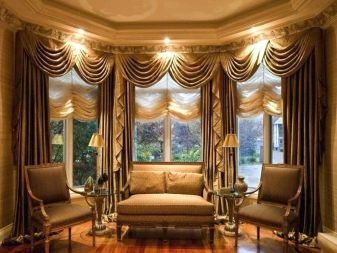
If you want the curtains to cover the windowsill, then measure the length from the eaves to the windowsill and add 10-15 cm to it. Such models are often combined with straight curtains. Some varieties are equipped with special weights, which is why they have a perfectly straight shape. In the standard version, the curtains end at a height equal to a few centimeters from the floor level.
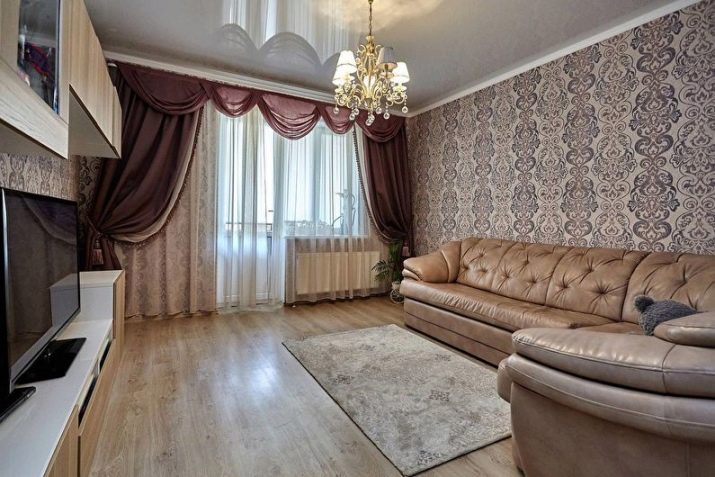
The length of the models to the floor differs in that the distance from the floor to the lower edge of the curtains usually does not exceed 1 cm. When choosing such a length, it is important to take into account the following factor: if the walls are uneven, the curtains can only fall on the floor with one edge, which looks very sloppy. As for non-standard options, then today you can find models whose edges lie on the floor.
Fortunately, this trend is not among the leading ones today, yielding the palm to analogues of greater practicality.
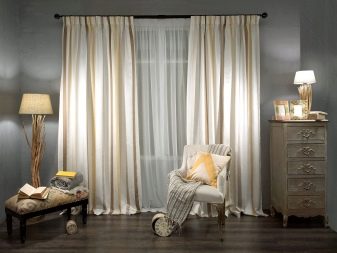

For living rooms, floor options or products of classic length are more suitable. Excessively long curtains with a regular ceiling visually reduce the height of the walls, the ceiling in this case seems low and unsightly. If the interior is made in a modern style, it can be decorated with combined curtain compositions, which will perfectly combine short and long options, wide and narrow.

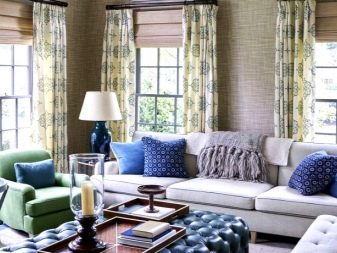
We take into account the size of the room
The choice of a curtain model for the living room directly depends on the size of a particular room, the height of its walls, the width and height of window openings. Usually, in a small space, you have to limit yourself to the simple design of products, the laconicism of their cut and design. If you buy large curtains for a small room, they will reduce the height of the ceiling and make the room visually heavy.
In addition, curtains with a complex design in a tiny room will not leave room for accents that are typical for any interior when zoning a space.
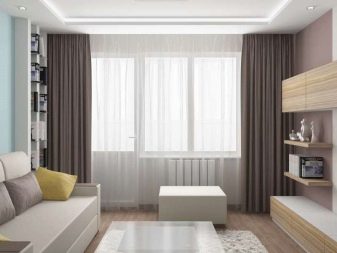

An important factor is the height of the ceiling: if the living room is two-level, long curtains are used here. When the ceiling is low, this disadvantage has to be played up with the correct length and shape. For example, in the living room of a small apartment, curtains should not lie on the floor. Wherein it is highly undesirable to select models typical for the arrangement of spacious halls.
For example, an attempt to hang classic curtains with a lambrequin and complex draperies in such a room is initially doomed to failure. A complex design is better viewed from afar, simple design relieves space, does not strain the eyes, which contributes to the creation of a comfortable atmosphere.
If you definitely want to use a lambrequin, then in a small space it can be rigid and narrow.
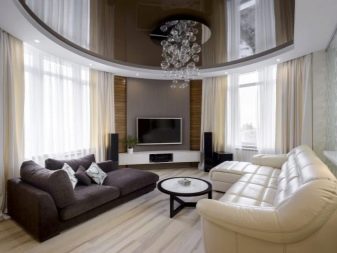

Selection Tips
When looking at options for curtains for decorating a living room, you need to pay attention not only to the aesthetic component, it is important to take into account a number of other nuances.
- Often times, interior decorators do not take into account the type of room. Simple curtains with an unpretentious print are suitable for decorating a country house. Models on hinges, rings, curtain tape, as well as openwork tulle will look good here.
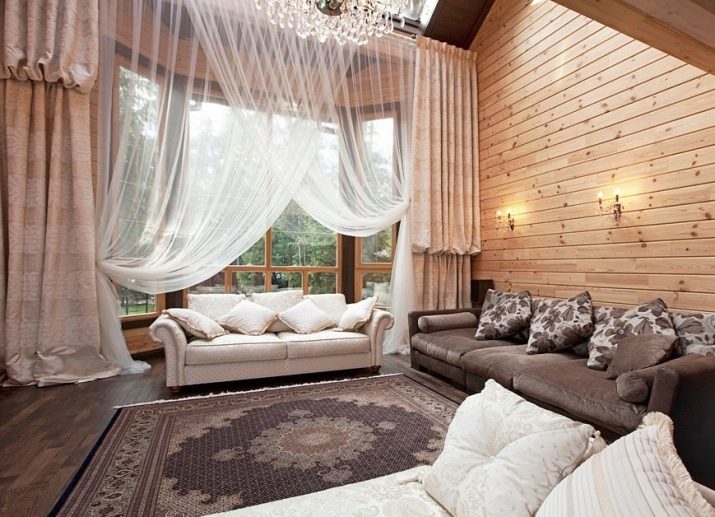
- In an ordinary apartment with a standard area, models are purchased with eyelets, a drawstring, and hidden mounts. If the living room area is small, you can decorate it with Roman, Japanese models, pleated blinds, roller blinds.
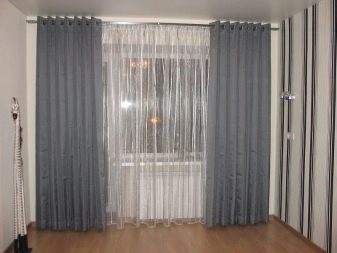

- In a bright living room, you can choose solid-type models that cover the window or part of it... For example, it can be a transparent voile, stationary curtains, draped curtains such as French curtains.
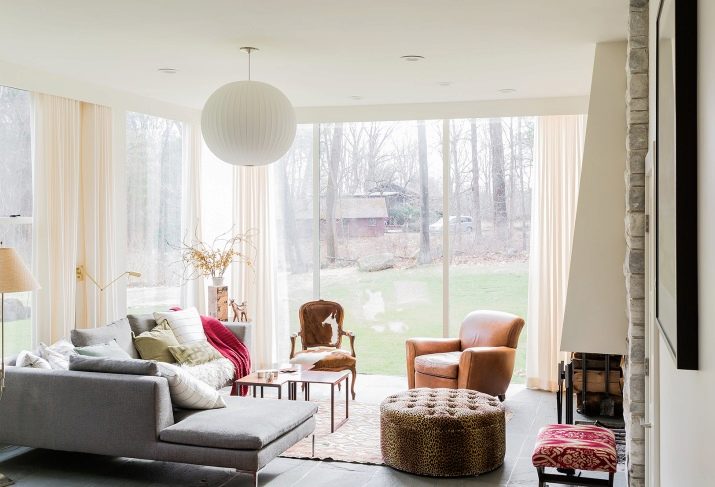
- For "Khrushchev" it is worth choosing simple curtains or tulle, veil.
When choosing a color scheme, you need to take into account the color of the walls (the tone of the curtains should not merge with it).
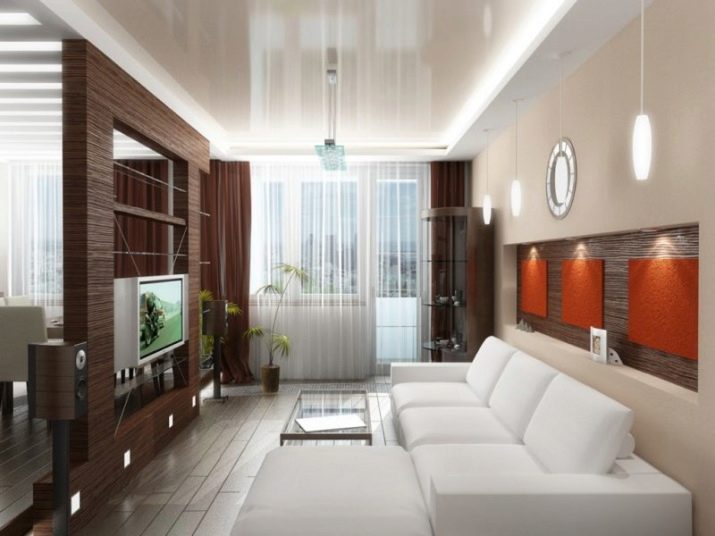
- When choosing products for decorating a living room, one must not forget that functionality must be put in the first place. Today it is customary to show sophistication without frills. The curtains for the new season should be beautiful and as simple as possible.
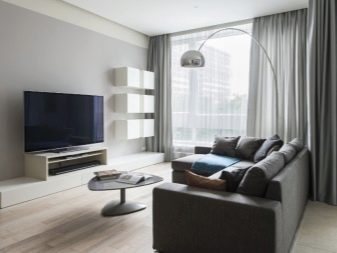

- At the peak of popularity, models of the Scandinavian, Japanese and Roman styles, as well as Austrian and French curtains. Of the traditional options, floor-length curtains are relevant.
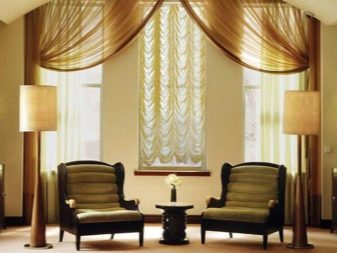
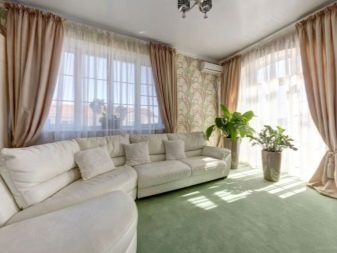
- Models with and without a lambrequin look beautiful with a stretch ceiling. At the same time, you can buy products for a hidden cornice. These can be both daytime and day-night versions.
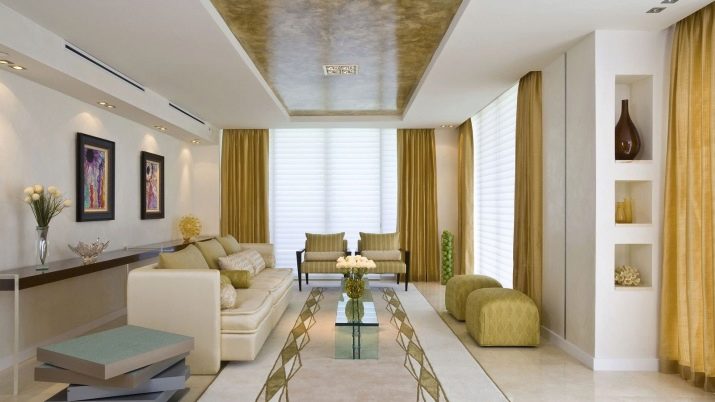
- It is important to pay attention to the color of the wall cladding and furnishings. Curtains can be combined with dark or light furniture, the color can be related.
However, if there is a lot of dark in the interior, the curtains should certainly be light, softening the perception of space.

- Design ideas are selected based on stylistic resources. For minimalism, you need laconic rectangular curtains and, if possible, plain (no pattern). For studio layouts, no-frills styles are also preferred.

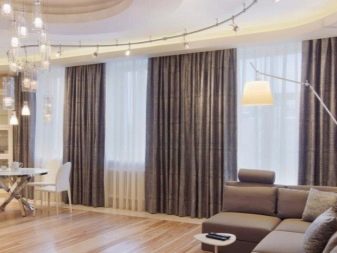
Choosing a design option for bay windows, rely on different nuances... For example, it is important to take into account not only the number of windows, but also their size, the shape of the ledge itself, as well as the type of cornice... If it is solid, you can buy a single curtain (voile, tulle) for the windows. If there are several cornices, you will have to purchase several panels, choosing them in a single color scheme.

Stained-glass curtains, Japanese panels, blinds, Austrian, French, London curtains look beautiful in the design of a small bay window. If there are several windows in the living room, the curtains for them are selected in a single stylistic solution. For example, these can be ready-made kits for two or three windows.
The design can be unusual... For example, you can combine blinds and tulle, roller blinds and voile, London curtains and classics.

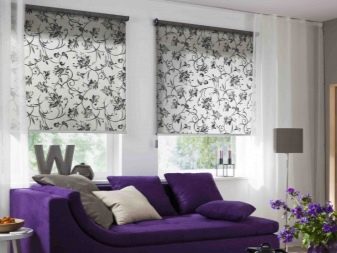
Beautiful examples
Finally, it is worth referring to examples of photo galleries, which clearly show the possibilities of curtains in arranging the interior of a living room.
An example of the choice of curtains for arranging a bright living room.

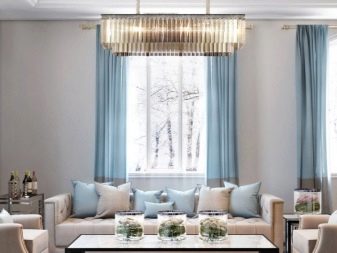
Decorating room windows with curtains in a dynamic color scheme.
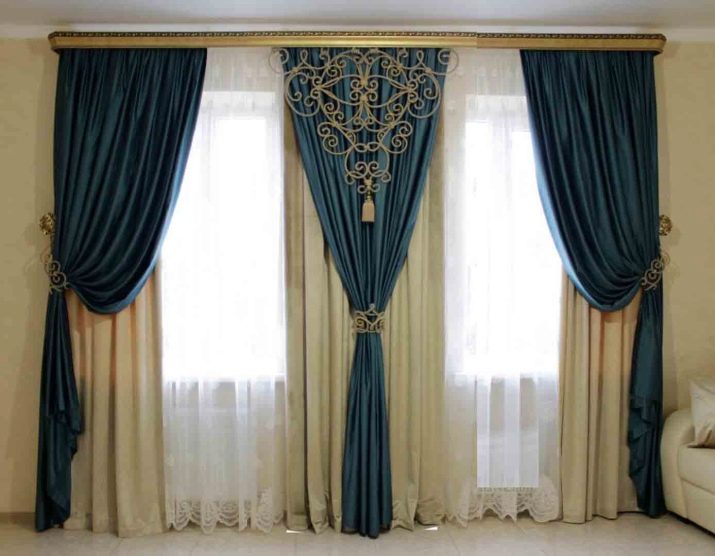
The choice of curtains for decorating a spacious living room.
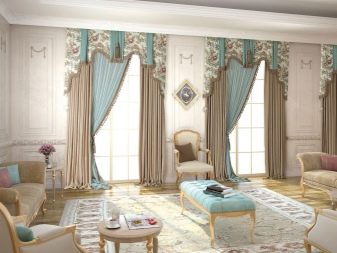
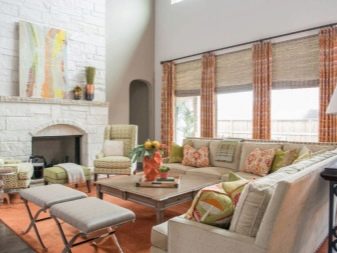
Original curtains for decorating the windows of a small room.
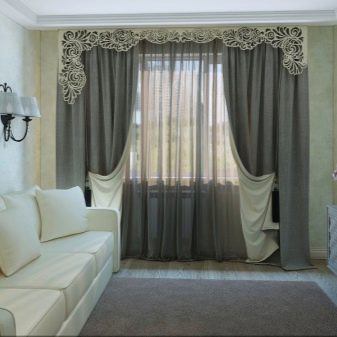

Decoration of the living room windows with a balcony.
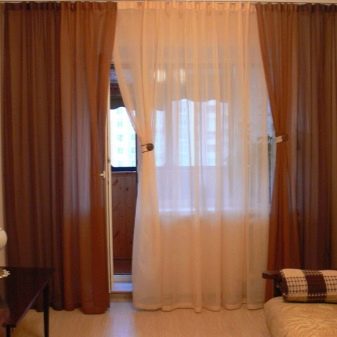
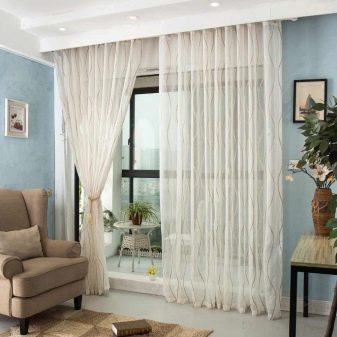
Stylish curtains give the hall a special status.
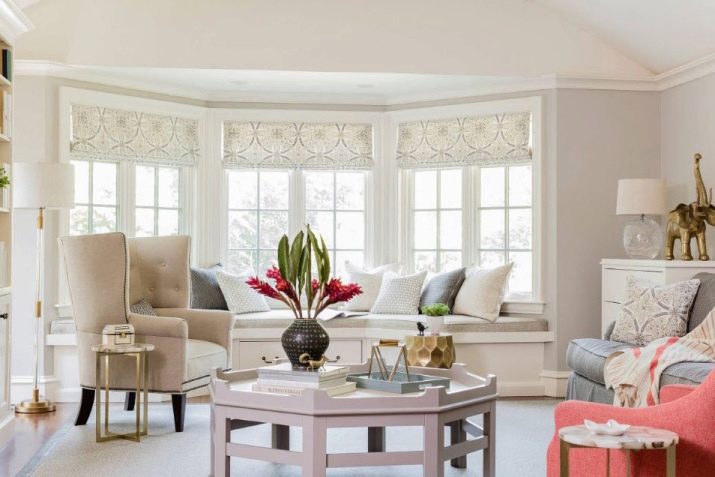
Triple curtains make the living room windows look smart.
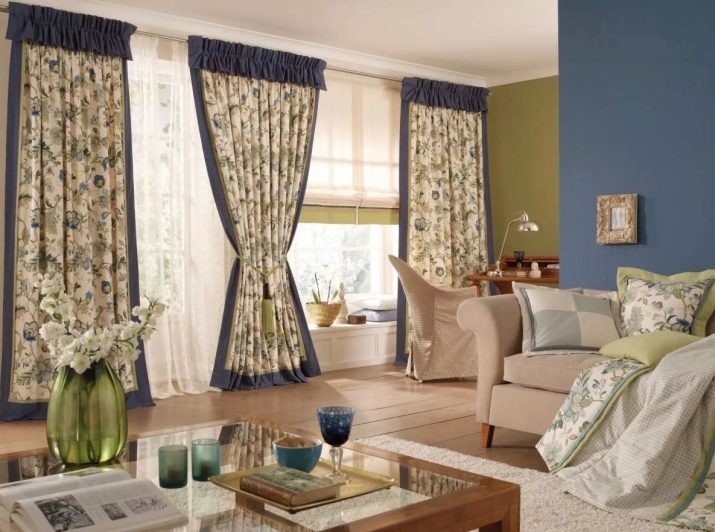
Curtains for the panoramic windows of the spacious hall.
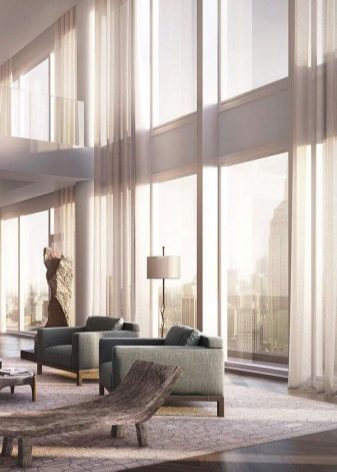
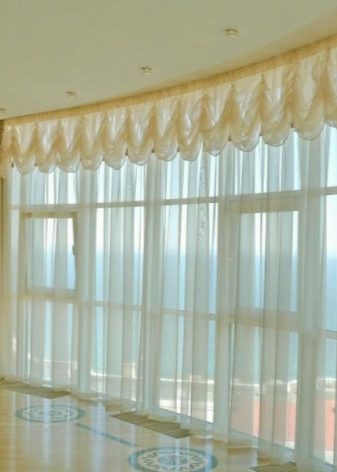
Luxurious plain curtains in the living room interior.

The choice of curtains for the corner windows of the guest space.
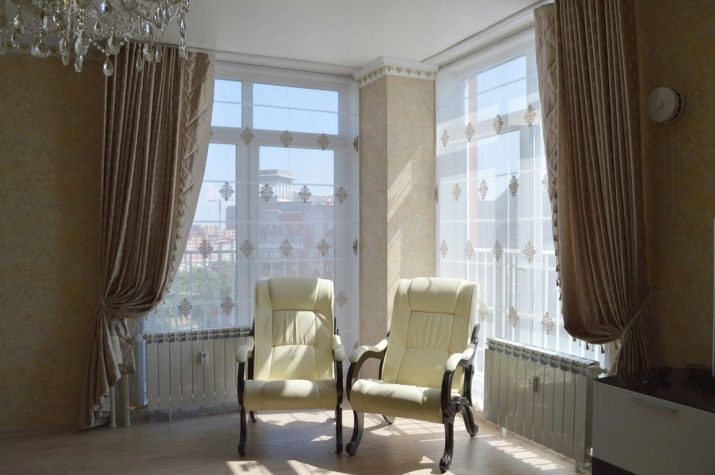
For information on how to choose curtains, see the next video.








